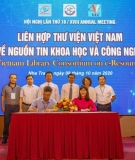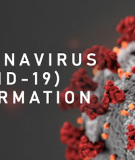Tài liệu Thư viện số
- Quy chuẩn kỹ thuật Quốc gia (305 )
- Kiến trúc (204 )
- Hàng hải - Máy tàu biển (336 )
- Cơ khí - Đóng tàu (1167 )
- Điện - Điện tử (1158 )
- Công trình (1059 )
- Công nghệ thông tin (1128 )
- Kinh tế (821 )
- Ngoại ngữ (254 )
- GDQP - Lý luận chính trị (196 )
- Cơ sở - Cơ bản (415 )
- Luận văn - Luận án (844 )
- Đề tài khoa học (43 )
- Tài liệu hội thảo (8 )
- Văn bản - Biểu mẫu (14 )
- Tài liệu khác (267 )
Danh mục TaiLieu.VN
- Mẫu Slide Powerpoint
- Luận Văn - Báo Cáo (344720)
- Kinh Doanh Marketing (65512)
- Kinh Tế - Quản Lý (48934)
- Tài Chính - Ngân Hàng (55898)
- Công Nghệ Thông Tin (142209)
- Tiếng Anh - Ngoại Ngữ (47066)
- Kỹ Thuật - Công Nghệ (134345)
- Khoa Học Tự Nhiên (107174)
- Khoa Học Xã Hội (82451)
- Văn Hoá - Nghệ Thuật (54408)
- Y Tế - Sức Khoẻ (173915)
- Nông - Lâm - Ngư (62504)
- Kỹ Năng Mềm (29016)
- Biểu Mẫu - Văn Bản (27610)
- Giải Trí - Thư Giãn (51994)
- Văn Bản Luật (198854)
- Tài Liệu Phổ Thông (402015)
- Trắc Nghiệm Online (213578)
- Trắc Nghiệm MBTI
- Trắc Nghiệm Holland
Tin tức nổi bật
Kết quả 6745-6756 trong khoảng 8220
-
Lecture TCP-IP protocol suite - Chapter 7: ARP and RARP
Upon completion of this lesson, the successful participant will be able to: Understand the need for ARP, understand the cases in which ARP is used, understand the components and interactions in an ARP package, understand the need for RARP.
34 p vimaru 29/04/2016 1440 6
-
Lecture TCP-IP protocol suite - Chapter 13: Stream control transmission protocol
When you finish this chapter, you should: Be able to name and understand the services offered by SCTP, understand SCTP’s flow and error control and congestion control, be familiar with the fields in a SCTP segment, understand the phases in an SCTP association, understand the SCTP state transition diagram.
82 p vimaru 29/04/2016 1190 4
-
Lecture TCP-IP protocol suite - Chapter 4: IP addresses: Classful addressing
In this chapter, you will learn: Understand IPv4 addresses and classes, identify the class of an IP address, find the network address given an IP address, understand masks and how to use them, understand subnets and supernets.
65 p vimaru 29/04/2016 1535 11
-
Lecture TCP-IP protocol suite - Chapter 8: Internet Protocol (IP)
In this chapter students will be able to: Understand the format and fields of a datagram, understand the need for fragmentation and the fields involved, understand the options available in an IP datagram, be able to perform a checksum calculation, understand the components and interactions of an IP package.
61 p vimaru 29/04/2016 1387 4
-
Lecture TCP-IP protocol suite - Chapter 6: Delivery and routing of IP packets
This chapter describes the delivery and forwarding of IP packets. Delivery refers to the way a packet is handled by the underlying networks under the control of the network layer. Concepts such as direct and indirect delivery are discussed. Forwarding refers to the way a packet is delivered to the next station. We discuss two trends in forwarding: forwarding based on destination address of the packet and forwarding based on the label attached...
38 p vimaru 29/04/2016 1760 3
-
Lecture TCP-IP protocol suite - Chapter 14: Multicasting and multicast routing protocols
Upon completion you will be able to: Differentiate between a unicast, multicast, and broadcast message; know the many applications of multicasting; understand multicast link state routing and MOSPF; understand multicast link state routing and DVMRP; understand the Core-Based Tree Protocol; understand the Protocol Independent Multicast Protocols; understand the MBONE concept.
40 p vimaru 29/04/2016 1482 3
-
Lecture TCP-IP protocol suite - Chapter 9: Internet Control Message Protocol (ICMP)
After studying this chapter you will be able to: Be familiar with the ICMP message format, know the types of error reporting messages, know the types of query messages, be able to calculate the ICMP checksum, know how to use the ping and traceroute commands, understand the modules and interactions of an ICMP package.
51 p vimaru 29/04/2016 1298 30
-
Lecture TCP-IP protocol suite - Chapter 11: User Datagram Protocol (UDP)
When you finish this chapter, you should: Be able to explain process-to-process communication, know the format of a UDP user datagram, be able to calculate a UDP checksum, understand the operation of UDP, know when it is appropriate to use UDP, understand the modules in a UDP package.
30 p vimaru 29/04/2016 1507 4
-
Lecture TCP-IP protocol suite - Chapter 10: Internet Group Management Protocol (IGMP)
Upon completion you will be able to: Know the purpose of IGMP, know the types of IGMP messages, understand how a member joins a group and leaves a group, understand membership monitoring, understand how an IGMP message is encapsulated, understand the interactions of the modules of an IGMP package.
28 p vimaru 29/04/2016 1255 12
-
Lecture TCP-IP protocol suite - Chapter 12: Transmission Control Protocol (TCP)
Upon completion you will be able to: Be able to name and understand the services offered by TCP, understand TCP’s flow and error control and congestion control, be familiar with the fields in a TCP segment, understand the phases in a connection-oriented connection, understand the TCP transition state diagram, be able to name and understand the timers used in TCP, be familiar with the TCP options.
64 p vimaru 29/04/2016 1572 12
-
Lecture TCP-IP protocol suite - Chapter 18: Domain Name System (DNS)
After studying this chapter you will be able to: Understand how the DNS is organized, know the domains in the DNS, know how a name or address is resolved, be familiar with the query and response formats, understand the need for DDNS.
41 p vimaru 29/04/2016 431 16
-
Lecture TCP-IP protocol suite - Chapter 17: BOOTP and DHCP
In this chapter we discuss our first client/server application program, Dynamic Host Configuration Protocol (DHCP). This application is discussed first because it is the first client/server application program that is used after a host is booted. In other words, it serves as a bootstrap when a host is booted and supposed to be connected to the Internet, but the host does not know its IP address.
11 p vimaru 29/04/2016 1408 9
Đăng nhập
Bộ sưu tập nổi bật
























